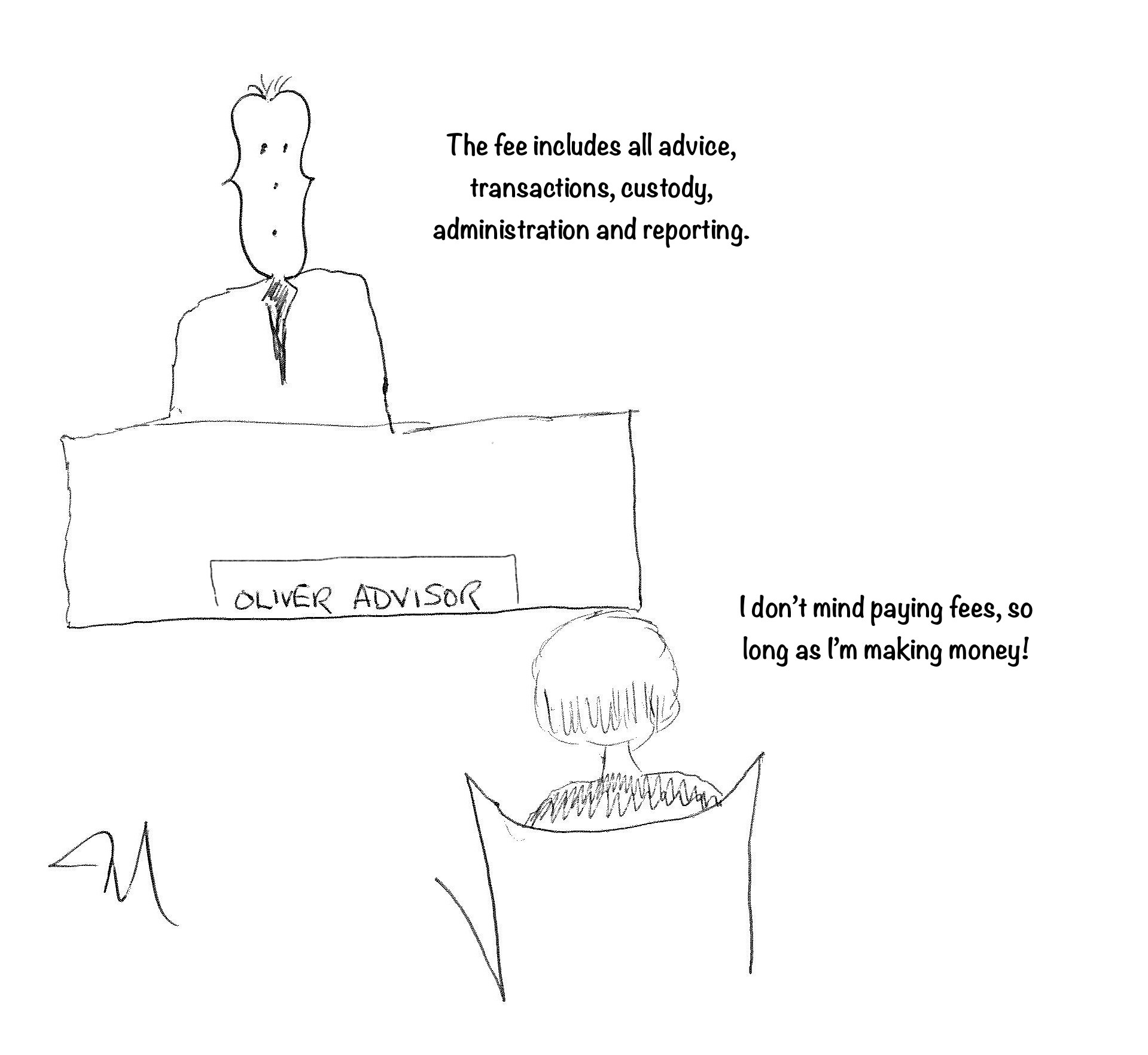Recently, a lot of attention has been given to investment management fees. This is thanks in part to regulatory changes that have forced more transparency, and rightly so. But a series of television commercials that take stabs at mutual funds and advisors have also made this topic more front of mind for investors. I don’t actually mind the commercials or anything that gets people to ask questions and become more engaged. But if transparency is the aim, the commercials fall short because they don’t help investors to understand fees better, and that particular knowledge is what will put them in a stronger position as informed consumers. So, in the spirit of transparency and to shed light on this, I have decided to take it upon myself and break down and explain these fees.
The first thing is to distinguish the fees that are charged by mutual funds to manage the fund and the fees that are paid to advisors for advice, planning, transactions, and account administration. Sometimes, these fees are bundled together and charged by the mutual fund who passes along a portion to advisors. These payments to advisors are known as “trailing commissions”. In other cases, advisors charge their fees directly to clients’ accounts and use a version of the mutual fund that carries only the fund company’s fees. This makes it easier to see exactly what you are paying for advice. However, the fund’s fees are embedded, meaning you don’t see them explicitly being paid. Here is how that works.
Let’s say you own a Canadian equity fund where the advisor charges fees for advice directly and the fund you own has only charges for the fund company. Now for the purpose of this example, let’s say that the fund company’s charge is 1% of the assets annually. When markets close each day, the value of the fund is calculated using the closing price of all the stocks the fund owns. The fund company will also take one day’s worth of the fees out of the fund; so, 1% of the assets in the fund divided by 365. When you see the value of the fund units, the fees have already been taken out. Same with performance; it is shown after fees. If the stocks in the fund got a collective return of 6% last year, the one-year performance of the fund would be 5%. And if the stocks fall in value and their performance was said negative 6%, then the fund’s return would be negative 7% because of the fees.

The service promoted in the commercial involves a lower fee on both sides of the equation, and that’s fine. There is a place for that. The problem is they are not upfront about what you pay and what you get for the fee. While the services are low-cost, you are not establishing a one-on-one relationship with an experienced professional who is easily accessible and customizes a plan for you. These people do not spend years getting to know you, your family, your values, your sensibilities, and matching all of that information to your strategy. They do not provide in-depth retirement, tax, estate, and cash flow planning as part of that fee. The investments offered to make no attempt to outperform indices, to lower risk, or to be tax efficient. All of these things, when provided by a full-service advisor, may cost more, but they have a great deal of value in the long run.
I am extremely committed to keeping costs as low as possible and, even more, providing exceptional value and absolute transparency. This is why I encourage everyone to contact me for an analysis of the fees, services, and value you are receiving. Once you learn more, you’ll see why my experience and expertise may cost a little more than what you can find on TV, but may also offer you a lot more value!

